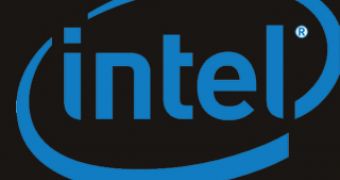Intel 4 Series Chipsets for mainstream desktop PCs and Intel Atom processors have been declared available today at Computex 2008 in Taipei. Also, Intel executive Sean Maloney said that a new era, characterized by full Internet on mobile devices, is near, and that more powerful microprocessors along with high-speed WiMAX wireless networks would take the lead.
Maloney said that there is an emerging class of compact mobile solutions that are called netbooks and nettops. These will be able to feature the new versions of Intel Atom processors. He also showed that a large number of IT vendors came to Computex with Intel based devices, summing up a number of 100 Intel processor and chipset-based motherboards, netbooks and nettops.
Intel believes that 2008 will be the first year that will record more sales for mobile computing devices than those of desktop computers, the assumption being based on the fact that the netbook category is emerging this year. The company tries to give a hand on this by delivering a whole variety of high-performance, low-power processors and other advanced computer technologies that will make the industry deliver devices at all price points.
Netbooks are simple mobile solutions that offer to children, first-time Internet users or people just wanting an extra PC, the possibility of using them to run basic computing applications, listen to music, surf the Internet or check and send e-mails. Netbooks can also be used to play basic online games, or for social networking and making voice over IP phone calls.
The Atom processor comes in two flavors, the N270, which was designed for laptops in the beginning, and 230, created for desktops. Both processors feature a 1.6GHz clock speed, sit on a 533MHz frontside bus and load in 512KB of L2 cache. Mainstream desktop PCs will enjoy the new Intel 4 Series Chipsets and the latest 45nm Intel Core 2 Duo and Intel Core 2 Quad processors.
Maloney also stated that people tend to store all HD videos, photos, games and music in a sort of "central library" so that they will be able to access the stored data from any portable Internet-connected devices while on-the-go.
"The Internet is going 'high-def,'" Maloney said. "Desktop PCs with these new chipsets let you enjoy, share and protect your digital life. They have the processing power and graphics to deliver stutter-free HD video playback, improved 3-D performance and leading storage capabilities."
The WiMAX network aims at mobilizing Web 2.0
Maloney explained that wireless Internet access should be available everywhere and anywhere so that the way the Internet is used today for creating and accessing videos, for playing games or sharing photos would get a more extended mobilization. According to him, mobile WiMAX will make the Internet more open, quick and mobile. The idea is moving towards a global pattern. Informa Telecoms reports that more than 281 fixed or mobile WiMAX networks are being deployed today.
"Mobile WiMAX is the right solution and it's happening now," Maloney added. "Wireless networks will be how the majority of people get connected and they have to be Web 2.0 capable. That means they've got to have a lot of bandwidth to send data either to or from devices at a rapid-fire pace."
By the middle of July, Intel also plans to release a new generation of processors and chipsets for its next-generation mobile PC platform known as Intel Centrino 2 processor technology, formerly Montevina, designed for high-performance laptops. The shipments on the full line of Intel's chipsets and Wi-Fi devices will begin in early August.
Certain Intel Centrino 2 processor technology-based notebook PCs will also feature an integrated WiMAX/Wi-Fi solution known by the name of Echo Peak, especially designed by the company. For the second part of the year, Intel plans to release the WiMAX-enabled notebook PCs in the United States, creating this way a starting point, and to expand the availability of the WiMAX network during 2009.

 14 DAY TRIAL //
14 DAY TRIAL //